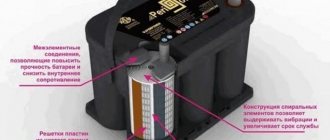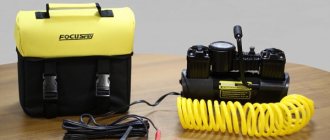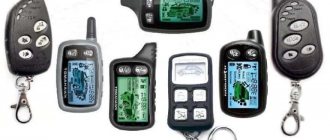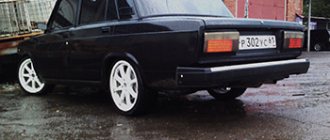Home » Reviews » Car DVRs » Selecting a flash drive (memory card) for the DVR
my_user 08/07/2020 226
2
SavingSavedRemoved 0
A prerequisite for purchasing automotive equipment is a flash drive for the DVR. The equipment instructions warn that you cannot use media less than 6 digits, which indicates the rate of recording and reading information.
The best Compact Flash memory cards
SanDisk Extreme Pro CompactFlash 160MB/s
Rating: 4.9
Why first place: Maximum data transfer speed.
SanDisk Extreme Pro CompactFlash is suitable for professional still and video cameras that save footage in RAW or high bitrate. The drive's performance for sequential writing is 150 megabytes per second, and for reading - 160 megabytes per second. The actual data transfer speed is 1067x.
One of the possible usage scenarios indicates the high performance of the memory card. The Canon EOS 5D Mark III professional camera is capable of recording up to 50 RAW images to this drive in burst mode without loss of information.
It is worth noting that not every card reader is able to cope with such speed (in fact, the highest in the rating). Therefore, when copying to or from a computer, performance will be limited by the bandwidth of the interface.
The drive is available in five configurations – 16, 32, 64, 128 and 256 GB.
Advantages
- Maximum speed;
- Wide operating temperature range;
- Lifetime warranty.
Flaws
- Relatively high price, especially for the 128 and 256 GB versions;
- No protection against water and dust;
- No X-ray protection.
Transcend CompactFlash (TS*GCF800)
Rating: 4.8
Why second place: Lower writing and reading speeds than the leader in the rating.
Transcend CompactFlash (TS*GCF800) is designed for semi-professional cameras and mid-range video cameras. Performance is less than its predecessor - the maximum speed for sequential writing is 60 megabytes per second, reading - 120 megabytes per second. In practice, this means that this card can record Full HD video with a bitrate of less than 20 MB/s (30 or 60 fps depending on the codec used) without the risk of failures.
Solving problems with a flash drive for a DVR
Videos and photos created by the dashcam camera are usually stored on a memory card. As you know, the internal memory of these devices is not very spacious, so often an SD or micro SD card is purchased along with it. The most popular card size among car enthusiasts is 32 GB, since this is the card size that is considered optimal for most FullHD recorders.
Sometimes the recorded information can be very important, for example, if an accident or some other emergency was recorded. At such a moment, the quality of the card plays a big role and it will be very disappointing if it suddenly fails
It may also happen that you just need to record something on a video camera, but the car recorder suddenly stopped seeing the flash drive or asked you to format it. But why does the DVR ask you to format the card or is it unable to recognize it? Main reasons:
- Operation of low-quality/defective/damaged media.
- Incorrect installation.
- Pre-format the micro SD card by the user by changing the format.
- Using a card with an inappropriate memory/data transfer speed class.
- The presence of viruses or system errors on the card.
- An old-style card with a low speed threshold.
The best of the best
What is the best memory card for a DVR, you ask. The answer is very simple. One that will ensure uninterrupted operation of the device. To choose the best option, you need to enter it into the following parameters:
- Volume. The vast majority of mid-price DVRs support 32 GB memory cards. The most modern and advanced models with Full HD recording will work perfectly with 64 GB cards.
- Dimensions. The micro SD format is so popular that almost all DVRs are equipped with slots of the required sizes. However, before purchasing a card, you need to pay attention to the markings on the device packaging. To be on the safe side, many manufacturers include special connectors in the kit that can significantly increase the range of device compatibility.
- Speed. Since we are talking about video recording speed, it is better to take a higher class, from the sixth or tenth. It is this that will have the most significant impact on the price of a mini flash drive.
How to choose a map for your navigator
Navigator media is divided into three formats: SD, SDHC and SDXC. The first one is the most common. Works well on almost all devices. The second has a memory capacity of 35 GB and is not compatible with devices that support SD chips. The third type has the most impressive storage capacity, up to 2 TB. This is the most expensive card.
The drive for the navigator should be selected based on the following parameters:
- volume;
- format, you need to focus on the device slot;
- quality of shooting and its duration;
- additional features: waterproofness, protection against temperature extremes, impact resistance and others;
- price.
When purchasing a memory card, pay attention to the writing and reading speed. You should buy devices from trusted places and from well-known manufacturers.
Compatibility
Before you buy a flash drive for your DVR, you should read the instructions. It indicates the types and models of recorders to which it is suitable
It is worth paying attention to drives from the same manufacturer as the DVR itself
Card format
The media format is inextricably linked to its volume. The formats are:
- CF or Compact Flash. Universal. In the past it was the most popular. Has low data processing speed.
- SD or Secure Digital. The most popular storage format. It is used by both amateurs and professionals. Its parameters resemble a postage stamp. The memory capacity of such a card can reach 1 terabyte.
- MicroSD. Similar to the previous format, only it has a miniature size. Used if the design of the DVR does not allow inserting a large memory card. The maximum micro SD capacity is 256 GB, the highest recording speed is 275 Mbit/sec.
- CFast. The best drives. They are durable. They have great speed. Impressive in size. Used in the most expensive models.
There is also a Tf memory card for the DVR. What format is this? Such drives are the smallest. Similar in size to MicroSD. The Tf card can have data storage capacity from 128 MB to 64 GB.
The class of memory card must be chosen carefully, based on the capabilities of the device. If the drive does not match the format of the DVR, then an adapter is used to connect it.
Memory
Not only the quality of shooting, but also its duration depends on the amount of memory. The most popular are cards with capacities from 4 to 64 GB. Expensive tracking devices use 1-2 terabyte chips. The best minimum capacity for a flash drive is 16 GB. A 32 GB memory card for the DVR, as well as a 64 GB drive, are optimal for shooting in Full HD. Cards with a capacity of 128 GB and higher are chosen for devices that support high-speed recording and wide format resolution.
How much memory card capacity do you need? It is difficult to answer this question. It all depends on the goals being pursued, the capabilities of the device and the price that a person is willing to pay.
Write speed
Drives vary in write speed. Premium cards have a high-speed mode. Marked 633X, 1000X or 2000X. The packaging may indicate the speed in megabytes. Any drive has two speed parameters. One indicates the read speed, the other indicates the write speed. The recording speed is divided into 10 classes. Only expensive devices can support the highest class. For a standard device, a speed mode of 1000X is sufficient.
Each card format has its own speed class. The U3 class is capable of 4K video recording. Class 10 and U1 carriers are considered slow. The higher the speed, the shorter the recording time.
How do memory cards differ from each other?
Memory cards are a whole class of external storage devices. And, of course, individual models differ from each other not only in manufacturer and volume. Cards are classified as follows:
- By format (MicroSD, CompactFlash, Secure Digital HC);
- By generation (MicroSD, MicroSDHC, MicroSDXC);
- By speed class (Class 2-10, UHS I-III).
Let's briefly look at these main differences, as they affect the compatibility of the drive and the mobile device.
Memory card formats
The card format determines its hardware compatibility with a mobile device. There is no cross-compatibility, so you should choose an external drive based on the technical characteristics of the device in which you plan to use it.
Thus, MicroSD drives are used in most modern mobile devices - smartphones, tablets, hybrid computers, even laptops, DVRs, etc. This format is compatible with SD, but only when using a special adapter.
Speed class
This is the most important parameter for the normal operation of the device. The correct recording of data to the card depends on the speed class. Flash drives with different classes can vary significantly in price. This characteristic should be selected based on the video recording format.
- 4th – recording speed 32Mb/s;
- 6th – recording speed 48Mb/s;
- 10th – recording speed 80Mb/s.
The 4th and 6th classes are capable of working with HD quality, and the 10th is quite suitable for recording in FullHD format. Also for FullHD you can take the UHS-I class (60-80Mb/s). UHS-II flash drives for a DVR will be a waste of money, since their speed is 100Mb/s. This is only needed for shooting in 4K.
Every driver should take the choice of a drive for a DVR seriously and select it based on the parameters of the device. Otherwise, the video in an emergency situation may be incorrect and you will not be able to prove your case.
The best microSD memory cards
Transcend TS*USDHC10U1
This memory card belongs to the microSDHC format. This means that its volume cannot exceed 32 GB. Not much, but for a certain category of smartphone and tablet owners this is quite enough. It is important that cards from this series have virtually no defects, and also boast very high speed properties.
Advantages:
- The company's product range includes cards with capacities from 8 to 32 GB;
- An SD adapter is included;
- Very long service life;
- Maximum speed properties.
Flaws:
- The maximum volume will not suit everyone.
Reviews of the Transcend TS*USDHC10U1 indicate that it is one of the fastest microSD memory cards. At least in its price segment. The rest of the cards are either slower or much more expensive.
Products from the Transcend TS*USDHC10U1 series can be used in mobile devices to watch movies, listen to music and perform other common activities.
READ ALSO
4 best hard drives for laptops
SanDisk Extreme microSDXC Class 10 UHS Class 3 60MB/s
A good memory card for those who do not require unusually high speeds from such a product. In particular, the card should suit owners of budget smartphones and mid-price segment devices that are not capable of 4K video shooting. The manufacturer writes on the packaging that the recording speed is 40 MB/s - practice shows that these words are very close to the truth.
Advantages:
- The package contains an SD adapter;
- Buyers practically do not encounter any breakdowns;
- Very good, albeit not record-breaking, speed characteristics.
Flaws:
- There is no 128GB version;
- The price decreases very slowly;
- Not suitable for devices that shoot very high-resolution video.
Reviews for the SanDisk Extreme microSDXC Class 10 UHS Class 3 indicate that this memory card is not worth buying if you plan to use it with a GoPro 4 Black. The fact is that you may encounter overheating of the product, which will make shooting in 4K or 2.7K resolution impossible. If you don’t indulge in such high-quality video shooting, then using this 64 GB card will not cause any problems.
READ ALSO
How to choose an SSD hard drive
Kingston SDCA3
And this is an ideal option for owners of the latest action cameras capable of video recording in 4K resolution. The speed characteristics here are such that problems will not arise either after one minute, or after ten minutes, or after half an hour of video recording. If you shoot a lot and often, we recommend that you get a 128 GB card, even if its cost scares you a little.
Advantages:
- The recording speed can reach 80 MB/s;
- Reading speed – at 90 MB/s;
- The assortment includes cards with capacities from 16 to 128 GB;
- Additionally, the buyer will receive an SD adapter.
Flaws:
- It's very expensive.
Reviews for Kingston SDCA3 indicate that this product exactly matches the characteristics stated by the company. An adapter is supplied with the card, which allows you to use it even in an SLR camera or an amateur video camera. If it were not for the high cost of the product, we would recommend that absolutely all owners of portable electronics acquire such a card.
READ ALSO
The best smartphones with 2 SIM cards according to customer reviews
How to choose the right memory card for your DVR
We present the most acceptable option for a step-by-step algorithm for selecting a memory card.
Stage 1.
At this stage, you should carefully study the basic requirements for memory cards installed in a specific DVR model. They are necessarily set out in the operating instructions included with the equipment.
Stage 2.
Selecting the memory capacity of the card. In most cases, car owners choose the maximum volume from the maximum allowed for a given recorder model. It allows you to record without destroying previously recorded video information for the maximum possible time. In this case, there is a reason to limit your choice to the financial side of the issue. If your DVR has a good codec that compresses information with sufficient density, there may be no need for excessively long storage of events that do not mean anything in terms of information content. If you use the recorder at the same time to perform security functions, it is more rational to purchase a card with maximum capacity.
Stage 3.
Selecting the memory card format. Currently, most DVRs support microSDHC cards. More modern and expensive recorders have support for the microSDXC format. It is represented by super-fast, large-capacity memory cards.
Stage 4.
Selecting a speed class. Memory cards are classified according to speed from class 2 to class 10. Second class cards have an information exchange speed of more than 2 MB/sec. Models of the “Extreme” type have truly insane speeds, sometimes more than 95 MB/s, significantly exceeding the speed of class 10. Of course, in some cases this speed is indicated on the card itself as a publicity stunt. The cost of such memory cards is sometimes an order of magnitude higher than usual, but their installation does not always bring a visible effect, especially since it is meaningless for models of mid-range and budget DVRs. In addition, such registrars may simply not see the high-speed card, and no one will accept it back.
The use of “elite” devices such as ELITE, ULTIMATE, PREMIUM and other advertising brands in most cases does not bring any positive results, primarily in terms of reliability. This is nothing more than a publicity stunt and a way to generate additional profit.
Cards with super-fast information exchange are required to record streaming video in 4K - Full HD resolution with a frame rate of 60 frames per second. But even in such cases, sometimes the speed that some class 10 devices provide is sufficient.
Video - which memory card is better to choose for the DVR:
If the DVR is used during long trips, for example, by truck drivers, then in order to carry out video monitoring activities, it is sometimes necessary to copy large volumes of files (several tens of gigabytes or more) to the computer. A regular card for such an operation will require at least a couple of hours. The special speed mode USB 3.0, which is indicated by the inscription on the UDMA 7 card, can significantly reduce copying time.
Stage 5.
Selecting additional parameters and characteristics.
Water Proof
characteristic or water resistance, is unlikely to be useful in a car, but for DVRs used on motorcycles it will not be superfluous.
Shock Proof
impact resistance comes in handy in the event of a frontal crash.
Proof
protection helps avoid loss of video information in harsh climatic conditions and when the recorder overheats.
X-Ray Proof
radiation protection is useful in specific areas of vehicle operation. Each of the above characteristics significantly increases the cost of a memory card, so you should be critical of the choice and its justification for the specific operating conditions of the car DVR.
Stage 6.
Manufacturer's choice. It is better to choose well-known brands, even if the production itself is located in third countries. Proven technology guarantees reliability.
Let's move on to purchase
Buying a high-quality, correctly selected memory card can significantly increase the speed of the car recorder. This means protecting the processor from constant overheating. You definitely need to pay attention to the technical characteristics of the device itself. Sometimes it is simply not able to support the capabilities stated on the card. A class 10 memory card for any DVR in the middle and low price segment will be optimal.
Labels such as “Elite” and “Premium” on the packaging of memory cards are intended only to attract the attention of the consumer.
An interesting marking that can confuse the average buyer is UDMA 7. It significantly affects the price of the card. It can be appreciated by consumers with a chronic lack of time for household chores. Flash drives with similar markings support the use of ultra-fast USB 3.0. Reading information will be, in this case, a record 160 MB per second. Consider whether this is worth the additional material costs.
Don't make impulse purchases at the corner store. Purchasing from branded online stores will guarantee the purchase of a high-quality extension. If the card is damaged, specialized service centers will help restore 95% of the lost information.
What are the reasons for the memory card not being visible?
The most common reasons that lead to video equipment refusing to accept a flash drive may be the following:
Incorrect formatting of the removable device; Defective, low-quality product; Mismatch between storage class and recording speed; The presence of errors and viruses on the flash drive.
A common problem of why video equipment does not see the memory card is incorrect formatting of the mechanism on the computer. Most products are formatted as FAT 32 or exFAT, but the DVR can only recognize equipment formatted in the former. To solve the problem, you can change the format again in FAT 32, which will return the product to the desired position.
Another reason for the registrar’s reluctance to accept a flash drive is related to low-quality alternative Chinese versions of memory cards. Such flash drives are stamped with low characteristics and can function for no more than a few months. In some cases, they do not connect immediately after purchase, so you need to be careful when choosing a product.
What should you consider when choosing a memory card?
On the product box, each DVR has detailed instructions for its use.
You need to carefully familiarize yourself with the types of removable media that the device can accept, and also pay attention to the quality of the accepted mechanisms. All storage devices are divided into classes, which determine the speed of downloading and receiving information
Modern recorders can only work with data storage products of at least class 10, which is not always acceptable for older drives with a low speed threshold.
In the video - more about solving the problem with the visibility of the memory card:
Almost every road tracking device for cars has a built-in information storage mechanism, and when you try to install additional removable media, the device malfunctions. This may also be caused by the presence of viruses on the flash drive, which prevent the connection from being made, giving a constant error. This situation can be corrected by using an antivirus program to clean the device and drive. To do this, you need to connect the DVR to your computer and scan the equipment for errors and viruses. After this, you should format the removable media in FAT 32 format and then insert it into the recorder.
You need to buy a card for collecting data in a specialized store and do not skimp, since the correctly selected media can last for several years.
SanDisk Ultra SDXC Class 10 UHS-I 64GB
SanDisk Ultra SDXC Class 10 UHS-I 80MB/s 64GB
The product is manufactured in Ultra format and provides data transfer at a speed of 80 megabits per second, it comes with a 60-month warranty. Using this card, you can significantly reduce the time for transferring and loading data, and recording in full-HD format will allow you to store large amounts of video and quickly transfer them from the camera to a computer or tablet. Among the advantages declared by the manufacturer are:
- waterproof case
- high level of impact resistance
- stable operation in conditions of temperature changes
- not perceiving direct contact with x-rays
Criterias of choice
To better navigate the market for relevant products, you need to know the basic criteria for the storage media for the DVR.
Speed class
The best DVRs record Full HD, Super HD or just HD video quality, so a compact electronic device must have the appropriate speed. There are several classes responsible for the speed of recording material. The higher the class, the better video files will be played.
Class types:
- Class 2 – it is not suitable for a DVR due to its low speed, but for an e-book it is what you need;
- Class 4 – most often used in budget DVR options;
- Class 6 – found in average products in this category;
- Class 10 – suitable for modern gadgets with wide functionality;
- Class 16 is ideal for recording top quality video.
There are also cards that support UHS, designed for high-bandwidth devices.
- UHS Class 1 or U 1 – maximum speed with 104 Megabits per second;
- UHS Class 3 or U 3 – maximum data transfer speed is from 156 to 312 Megabits per second.
In addition, a new speed class has appeared - VSC. It allows you to record video quality up to 8K.
The speed at which information is transferred to the card is indicated on the surface in the form of the letter “U” or “V”.
Memory
The value of this parameter determines how many gigabytes of information can be stored on a particular electronic device.
Experts in video recording devices say that the minimum capacity of a memory card should be 16 Gigabytes.
The following types are suitable for the DVR:
- A simple SD card is the oldest model, which holds 2 Gigabytes of information. Compatible with the following two types.
- SDHC or high capacity card – records information up to 34 GB. Suitable for high speed DVRs with high quality. Only compatible with the same SDHC cards and SDXC type cards;
- SDXC or Extended Capacity Card – Records up to 1 Terabyte, which is equal to 1,000 Gigabytes. Used in new generation devices with maximum image quality – Super HD. Compatible only with similar media.
Number of rewrites and reads
Based on this characteristic, one can judge the durability of the work - the greater the number of rewrites, the longer the device for storing video data will work. According to buyers, it is worth focusing on a product with 20 or 30 thousand rewrites, since those last for at least 5 years.
As for the amount of reading, there are no restrictions. Information can be read an infinite number of times.
Bitrate
Bitrate is the data transfer rate and an indicator of video clarity. The higher the bitrate, the higher the quality of the video recording, but high speed places a greater load on the processor. After overheating, it begins to work intermittently - the image freezes. In this case, lowering the bitrate will help, which will reduce the quality of the video, but will eliminate sudden stops during viewing.
Using the card
Slow recording speeds may result in recording equipment malfunctions or loss of video footage. It is advisable to have 1 more storage medium in reserve. The recorder records video in cycles—segments of several minutes. When memory runs out, old files are erased by new ones. To always be able to save old videos, keep extra recording capacity with you.
Be aware of the number of drive rewrite cycles. Modern flash drives have a lifespan of 10,000 to 1,000,000 cycles, but in practice the product wears out faster. Therefore, if possible, use a large-capacity card so that the same areas on it are overwritten less often.
How to format a memory card
To clear unnecessary video materials, you need to format the memory card. This must be done if a memory card error occurs and the recorder does not see it. Connect the drive to your computer or laptop. You will need a card reader. If it does not have a port for microSD, and you have such a flash drive, you need an adapter, which is often sold in the kit.
To reformat media in Windows, open My Computer. Find the memory card in the list of available devices and right-click on its shortcut. In the context menu that opens, select “Format”. All that remains is to specify the correct file system. This is FAT 32. You will receive a warning that all information on the media will be destroyed. Make sure that there is nothing important left on the flash drive, confirm the operation and wait until formatting is completed.
How to transfer from a DVR to a flash drive
All the recordings are already on the flash drive, you just need to take it out and connect it to the computer. If it is microSD, then you will need an adapter to connect it to the card reader of a laptop or PC. You can easily dump all materials from the DVR onto your hard drive for further manipulation.
- The radio sounds when the engine is running, what should I do?
- In what format should a flash drive for a radio tape recorder be?
- Rating of car seats for children from 6 months
- The best motor oils 5w 40











